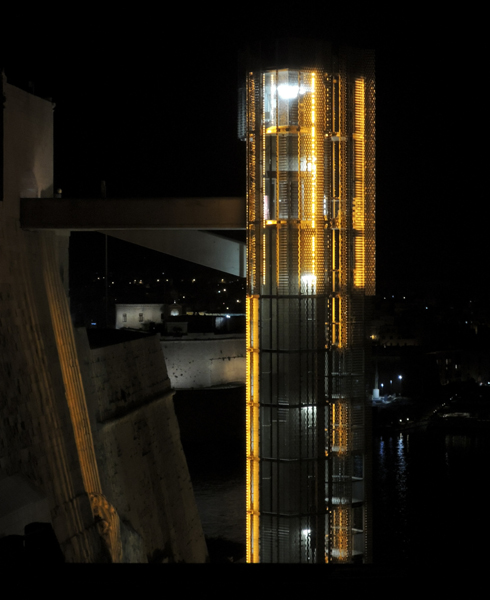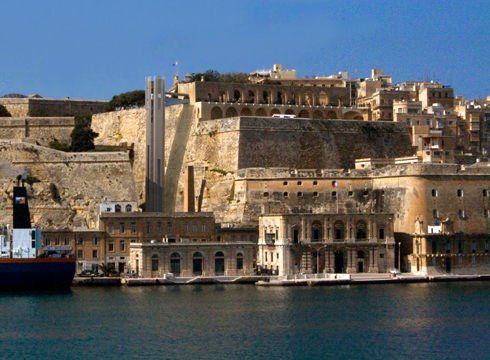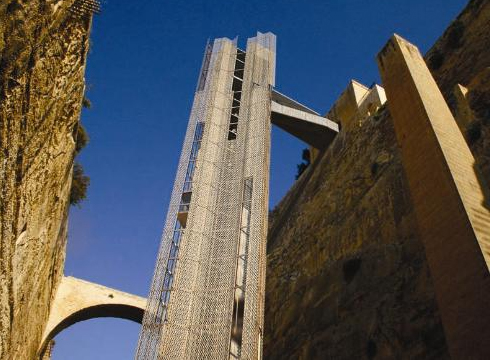
This recently completed twenty storey high panoramic lift, commissioned by the Grand Harbour Regeneration Corporation plc and designed by Architecture Project (AP), was inaugurated on Saturday 15th December Prime Minister Lawrence Gonzi and Infrastructure Minister Austin Gatt. It is located on the edge of Malta’s historic fortified capital city of Valletta. Where once the sixteenth century fortified walls of the town served to keep enemy ships at bay, they are now under conservation order and provide an unbeatable new access for visitors and residents flocking here. Valletta is being given a new lease of life as the island prepares to host the presidency of the European Union in 2017 and the city having recently been named European Capital of Culture for 2018.
The Barrakka lift structure is designed to enhance movement of large numbers of visitors and residents between the Grand Harbour and Valletta, from the Valletta waterfront, over the powerful landward enceinte of fortifications and into the heart of the city, creating new links to the Upper Barrakka Gardens and the new City Gate.


Shifting political and economic realities have always been a challenge for Valletta and the connection between harbour and city has transformed itself over the years in response to these unremitting changes. The eighteenth century saw the development of harbour infrastructure that gave rise to a thriving commercial hub outside the walls, separated from the residential heart of the city, while the British period transformed the port into a vital strategic naval and merchant base in the Mediterranean. Today, a very different economic reality is once again dictating the transformation of this dynamic area of the town: the recent restoration of Baroque waterside warehouses into a thriving cruise ship terminal as well as the development of restaurants and cafes, prompted the re-activation of a lift that had been built to connect the harbour with the town in 1905 during Valletta’s heyday as a trading port. The original lift structure was 60m tall and contained two lift cabins each with a capacity of 12 passengers. The operation was closed down in 1973 and the structure abandoned and eventually dismantled by the 1980s.
The renewed connection serves the needs of thousands of visitors approaching the city from the traditional arrival point at the foot of the bastions. The heavy demands of accessibility to and mobility around the town required a much larger footprint and a stronger vertical statement within the skyline of the historic harbour were therefore inevitable. In order to resolve this, a cavity was created by pulling the two lifts apart, where a staircase could be threaded in between. Not only does this space accommodate mandatory safety requirements, but it also reduces the visual weight of the lift structure itself and accentuates the vertical proportions of the structure. The lift can carry up to 800 people per hour, with its two cabins carrying up to 21 passengers each and takes 25 seconds to go up or down.
The geometric qualities of the plan echo the angular forms of the bastion walls, and the corrugated edges of the aluminium skin help modulate light as it hits the structure, emphasizing its verticality. The mesh masks the glazed lift carriages, recalling the forms of the original cage lifts, whilst providing shade and protection to passengers as they travel between the city of Valletta and the Mediterranean Sea.